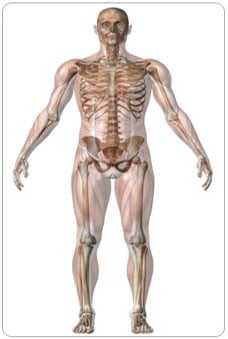Jaipur Foot
Jaipur Foot is a low cost, artificial lower limb manufactured in India that has transformed the lives of innumerable land mine victims and other amputees in India and other developing countries such as Afghanistan, Bangladesh, Dominican Republic, Indonesia, Kenya, Lebanon, Nigeria, Panama, Philippines, Rwanda, Somalia, Sudan, Uganda, Trinidad Zimbabwe, Zambia and many other countries. It costs about $40 and can be worn with or without shoes.
The artificial foot was developed in Jaipur by a traditional master craftsman Pandit Ram Chandra Sharma in 1968 and Dr. P.K. Sethi, an orthopedic surgeon. The original Jaipur foot was made of vulcanized rubber attached to a wooden limb. Though the initial idea has been constantly improved upon, the essence of the product however remains the same—low cost, easy and quick fabrication out of locally available materials and crafted by local artisans, lightweight and suitability for working people in India and other developing and under developed countries.
D. R. Mehta a young, officer of the Indian Administrative Service (IAS) who was recuperating from a serious car crash was struck by the poor and the maimed thronging in thousands from different parts of India to have the Jaipur foot fitted. He initiated a charity organization called the Bhagawan Mahaveer Viklang Sahayata Samiti (BMVSS) in 1975 to provide free artificial limbs to thousands of poor people who had lost a limb due to injury or disease.
Once an amputee enters the Jaipur Foot Center, there is a trauma counseling session to help the person accept the idea of having to live with the artificial limb. Orthopedic specialists inspect the level of amputation and prescribe the Jaipur foot. Next, a foot technician takes correct measurements of the stump and the rest of the limb (for reference) and proceeds to make a hollow cast. Plaster of Paris (POP) is poured into the cast to get a model of the amputee’s limb.
A pre-heated high density polyethylene (HDPE) pipe or sheet is pressed around the mould which results in an artificial limb assuming the natural shape of the missing limb. The POP mould is broken and removed from inside and a rubber or polyurethane foot is attached. The artificial foot is then attached to the stump with leather belts to hold it in place. After the foot is fitted, the person takes many exercises, especially in gait training to get used to the artificial limb and to build the required strength in the supporting muscles. Proper maintenance and care of the Jaipur foot is also taught to the amputees.











